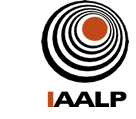












When you walk into an Accelerated Learning based program, you see a different physical setup. On the walls, you see relevant posters with content and thought-provoking quotes. You welcoming music and are greeted by your facilitator warmly. The seating arrangement is geared toward interaction and is flexible so that it can be changed to support whatever is happening. During the learning program, you sometimes see people engaged in experiments, dialogue or the creating of group presentations. At times, you find participants working in groups, playing memory or a board game to test their knowledge of content. You see participants developing a skit, creating learning activities to teach other groups, or putting together magazine cut-outs to make a collage to demonstrate good customer service or effective leadership. You see the facilitator presenting material in an engaging manner using visuals and other props or telling stories and engaging learners throughout.
Accelerated Learning draws from interdisciplinary research and best practices to create a roadmap for designing and facilitating learning programs that have real impact by design and not by chance. It incorporates much of what can be called "good teaching principles", but it does so in way that ensures learner success and personal development consistently. It provides guidelines to designing and facilitating learning that is applicable for any group of learners and any subject area.
By identifying the aspirations of learners and the organization, AL facilitators create experiences that help learners see the significance of the learning and engage in the process wholeheartedly. AL also looks at the barriers to learning and works to remove those, whether they are organizational in nature or personal barriers in terms someone's limiting beliefs. And, AL does not focus solely on what happens in the training room or classroom. It takes a systemic approach, beginning the learning journey before participants come to a formal learning program and supporting them at home and in their lives afterward through learning partnerships, coaching, follow up sessions and sharing of learning using various approaches and media.
The facilitator, the learning environment and the design of the learning process all work together to determine the success of learning and the learners.
The Facilitator
AL teachers, trainers, or professors act at all times as facilitators of learning. They create and support positive group dynamics and focus on individuals and their needs. IAALP places great importance on the personal development of the AL facilitator to become the kind of person who can create a learning space in which each person thrives. AL facilitators are comfortable with ambiguity, and can “read” the group and make good decisions about what is important at any given time in the learning process. They are creative, flexible and able to draw from a wide range of methods and tools to provide the right learning for each person and situation. They challenge, coach, inspire and guide.
AL facilitators change roles easily to support learning. They can be actors/actresses on stage, great story-tellers and entertainers, and then, as easily take a step back and hand over the stage to the learners, support them in discovering their own answers, guide them in developing new questions and help them master the learning through experimentation and carefully designed practice activities.
To guide the learning process successfully, AL facilitators are trained to see, hear, and feel more of what is happening in the group. They develop their sensory acuity or heightened observation skills and can use language and positive suggestion to support learning and development. In fact, the AL facilitator is so important that the training to become an IAALP certified facilitator places equal importance on personal mastery and growth and on the development of the skills to use the tools of AL effectively.
The Learning Environment
The facilitator creates and maintains a safe and stimulating learning environment. In an AL learning program, the space looks and feels different than in more traditional classrooms. Lighting, seating arrangements, wall space, and the materials used are all chosen or designed to create an environment that is aesthetically pleasing, interaction rich, and one that invites creativity, collaboration and experimentation. Participants see the important content on the walls. Music supports learning and retention. Movement and the learners' interaction with one another and the content is encouraged. The physical and emotional environment provide safety and invite learners to experiment and grow.
The Learning Design
Accelerated Learning design appeals to all learning and processing styles. The AL cycle offers a template to design and facilitate that provides a framework for success. It enables facilitators to adjust their design to accommodate what is happening in the learning environment. The Accelerated Learning design is an open system that provides enough of the right kind of structure to give guidance and ensure success time and time again. Among the certified IAALP trainers, you may find many different types of AL cycles, and different facilitators may use various names for the key elements. All of the cycles you will experience, however, include the preparation of the learner for the learning, activities that motivate and engage learners emotionally and mentally, the teaching of new content or processes in a way that involves learners through simulations, experiments, concert readings or other creative presentation forms. In the practice phases, you will find game-like activities that support participants in mastering the material from more facilitator supported to more learner-directed. To bring closure to the learning, you will find activities to allow learners to integrate the learning into their lives, to reflect on the learning and its relevance to them, and to celebrate success.
In the preparation stages for the design, Accelerated Learning practitioners find out what the limiting beliefs or suggestions of learners might be, and then carefully create activities and an environment that de-suggests or helps learner move beyond their limiting mental models and expand their perspectives. During the learning process, the aware facilitator revises the design as needed, and creates possibilities to support the creation of new and empowering beliefs and mindsets.
